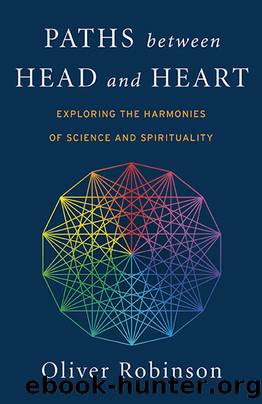Paths Between Head and Heart by Oliver C. Robinson

Author:Oliver C. Robinson [Robinson, Oliver C.]
Language: eng
Format: epub
ISBN: 978-1-78279-901-6
Publisher: John Hunt Publishing
Published: 2018-08-30T16:00:00+00:00
Another important influence on transpersonal psychology was the scholar of comparative religion Huston Smith, whose philosophy was in the tradition of Neoplatonism. He argued that a tree-tier view of reality is common to all religious traditions. In his book Forgotten Truth he describes this threefold structure as follows: The terrestrial plane (the gross, the material, the sensible, the corporeal, the phenomenal); the intermediate (the realm of archetypes and spirits which governs the terrestrial plane, and can be experienced directly in altered states of consciousness); and the celestial (experienced as God, Unity, the Love beyond opposites, or Primal Light, and can only be experienced indirectly). Around and beyond all these three levels, there is the Infinite – an all-inclusive totality that is beyond and within everything and defies all categorizations and opposites.21
The belief that reality is multilayered and extends beyond the physical has been not only central to the religions that Huston Smith surveyed, but also to indigenous spiritual traditions that predate scriptural religion. Shamanism is the modern name given to spiritual practices and ideas that are thought to have their origins in the Neolithic period (20,000–2000 BC), and which are still practiced in many tribal cultures today. Some shamanic rituals may have been used continuously now for 12,000 years in some parts of the world, which makes them a candidate for the most enduring cultural practices in human history.22
Linked to the rise of transpersonal psychology, techniques from shamanism have seen considerable growth as a form of spirituality in the West since the 1960s, including the use of drumming and dancing as a way of altering consciousness, and the use of plant medicines.23
Shamanic practitioners train in how to enter into a state of expanded consciousness that allows access to transcendental levels of reality. The core shamanism method commences with setting an intention at the beginning of the journey to gain transcendental information to help or heal, and then imagining moving into a higher world, middle world or lower world, while listening to a repetitive drumbeat. As the journey progresses, the practitioner will experience themselves journeying to other dimensions, and interacting with beings or spirit animals that apparently exist there.
Following the ideas of Carl Jung, transpersonal psychology conceives of the unconscious as a parallel universe to waking consciousness that extends beyond the brain and body. While the conscious self is experienced as me and mine, the deeper layers of the unconscious become increasingly other and not-me. This helps to explain why the beings and realms encountered in the shamanic journey are experienced as beyond the self.24 The philosopher Terence McKenna describes this as follows:
I believe that the best map we have of consciousness is the shamanic map. According to this viewpoint, the world has a ‘center,’ and when you go to the center – which is inside yourself – there is a vertical axis that allows you to travel up and down. There are celestial worlds, there are infernal worlds, there are paradisiacal worlds. These are the worlds that open up to
Download
This site does not store any files on its server. We only index and link to content provided by other sites. Please contact the content providers to delete copyright contents if any and email us, we'll remove relevant links or contents immediately.
Enlightenment Now: The Case for Reason, Science, Humanism, and Progress by Steven Pinker(7274)
A Journey Through Charms and Defence Against the Dark Arts (Harry Potter: A Journey Through…) by Pottermore Publishing(4789)
The Immortal Life of Henrietta Lacks by Rebecca Skloot(4552)
A Journey Through Divination and Astronomy by Publishing Pottermore(4364)
Elon Musk by Ashlee Vance(4085)
Origin Story: A Big History of Everything by David Christian(3666)
COSMOS by Carl Sagan(3590)
Alchemy and Alchemists by C. J. S. Thompson(3483)
Bad Pharma by Ben Goldacre(3397)
Enlightenment Now by Steven Pinker(3353)
Shadow of Night by Deborah Harkness(3327)
Inferior by Angela Saini(3294)
A Mind For Numbers: How to Excel at Math and Science (Even If You Flunked Algebra) by Barbara Oakley(3259)
Origin Story by David Christian(3170)
The Code Book by Simon Singh(3140)
Signature in the Cell: DNA and the Evidence for Intelligent Design by Stephen C. Meyer(3101)
The Elements by Theodore Gray(3028)
A Brief History of Time by Stephen Hawking(2994)
A Journey Through Potions and Herbology (A Journey Through…) by Pottermore Publishing(2838)
